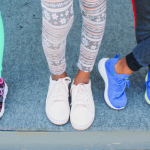There may have been a few lonely bright spots twinkling through the haze of a languid May for retailers, but results were largely disappointing as the retail market made it clear to economists and analysts that any hints of recessional relief are just that — hints. With Wal-Mart (which seems to remain somewhat impervious to market challenges as others buckle) declining to report results for the month, the retail market came crashing back to reality after a decent March and a respectable April that gave indications to some that the end was drawing near.
That doesnt appear to be the case, however, as The International Council of Shopping Centers said same-store sales declined by 4.6% based on a tally of 32 retail-chain stores — 1 point to 1.5 points worse than most analysts forecasted. Excluding Wal-Mart, May marked the tenth straight month that saw declining retail comps.
The weak start to the retail fiscal quarter does not bode well for the period as a whole as retailers now must contend trying to anniversary some artificial gains last year bolstered by stimulus checks that were sent out in May. As gas prices start to climb again, the consumer may well opt to keep their powder dry and the extra $12 a week they are getting in the latest stimulus program.
A survey conducted by the ICSC found that about one-third of the federal income tax rebates were spent by June last year, which boosted consumer spending by $10 billion to $15 billion in May of last year and close to the same amount in June. This indicates that there may be some “lagged response” between rebates being received and being converted to discretionary income.
As has been the case in recent months, department stores continued to struggle, posting a high-single-digit decline for the month of May, according to the ICSC data. Luxury stores saw high-teens weakness as Neiman-Marcus and Saks each reported comps down in the mid- to high-20s, while Nordstom — which continues to weather the storm (as far as luxury stores go) — reported comps were off in the low-teens.
Likewise, the rich got (relatively) richer as discounters Ross Stores and The TJX Cos. reported comps up 4% and 5%, respectively.
Target provided a mild surprise to analysts by failing to meet expectations as the discounter to the upper-crust posted a comp sales decline of 6.1% in May, a decline that may reinforce the notion that the consumer continues to navigate for the deepest possible discounts.
Teen retailers continued to record mixed results, as double-digit strength from The Buckle and Aeropostle was more than offset by falling comps elsewhere. Same-store sales for Zumiez plummeted more than 20%, while Abercrombie & Fitch continued its free fall, reporting a 28% comp sales drop despite finally cutting merchandise prices to better compete with rivals.
Looking ahead, ISCS research anticipates June comp store sales will be down by 3% to 4% versus the year-ago month.
Despite the grim reports, there appears to be a sunnier outlook as a recent report by the U.S. Labor Department found that the U.S. lost fewer jobs than expected in May, an indication that the recession may, in fact, be bottoming out, but the Street may just be grasping for any straws to keep the recent rally going.
The U.S. Labor Department said the unemployment rate rose to 9.4% — the highest in more than 25 years — but the rate of layoffs slowed for the fourth straight month. The Labor Department determined that about 345,000 jobs were lost in May, the smallest number of monthly job losses in seven months. Economist had originally forecasted 520,000 job losses in May and an unemployment rate of 9.2%.
Still, despite these positive signs that the job market may be stabilizing, most economists expect the jobless rate to top 10% before it turns. Regardless, the findings at least indicate that the wave of massive job cuts that the job market endured during the first three months of the year are now in the rear view mirror at least until all those new graduates hit the streets looking for work.
A report by CNNMoney.com notes that education and health services and the leisure and hospitality sectors recorded growth in May, while nearly one-third of industries actually added jobs during the Month — the highest level of gains since October.
The Buckle continued its enigmatic run through the mall as comps for the teen retailer increased 13.4% on sales that jumped 19.2% to $60.6 million in the year-ago period.
For the womens side, which represented about 51% of total sales, saw 35% growth that was driven by strength from denim, knit tops,active apparel, accessories and footwear.
Accessories for the month increased 33% while footwear was up 23%.
“Our comping stores in the western half of the United States, which account for about 55% of our comparable-store sales, comped down in the mid-negative 20% range and continue to post comp-store decreases lower than our stores in the South, Midwest, and Northeast,” said Trevor Lang, CFO of Zumiez, Inc.
On a conference call with analysts, management for The Buckle noted that the mens business, which represented 39% of sales, saw 1% growth that was boosted by strength in denim and active apparel.
For the womens side, which represented about 51% of total sales, saw 35% growth that was driven by strength from denim, knit tops,active apparel, accessories and footwear.
Accessories for the month increased 33% while footwear was up 23%.
Zumiez reported comparable store sales for May declined 20.7% versus an increase of 0.2% in last years corresponding period. Total sales for May declined 9.6% to approximately $23.5 million as compared to $26 million for 2008. On a pre-recorded call, management attributed the decline to negative comps in all departments.
“Our comping stores in the western half of the United States, which account for about 55% of our comparable-store sales, comped down in the mid-negative 20% range and continue to post comp-store decreases lower than our stores in the South, Midwest, and Northeast,” said Trevor Lang, CFO of Zumiez, Inc.









